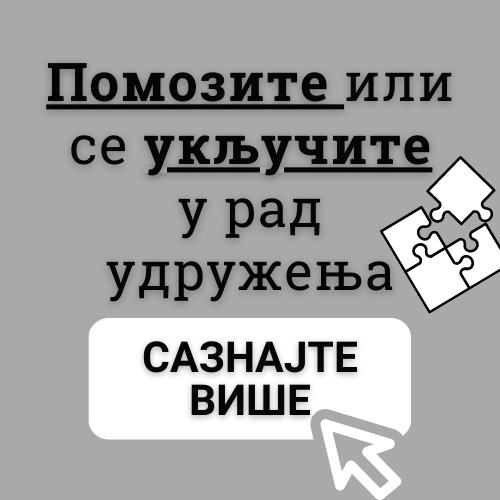Supporting the survey by “Novi list” from Rijeka in 1975, I would certainly like to ask questions that I have been waiting to be answered by someone who wants to help the truth with honest words. Many unclear questions wait for these answers.
- Who gave the order and who executed Yugoslav officer Benić “while he was escaping” and where is he buried?
- What was the behaviour of the Ustasha political camp in Pag regarding the forming of the concentration camp in Slana?
- Who decided on the aid being sent to Ustashas in Slana, whether by providing manpower, helping with the organisation, materials or transportation?
- Who gave orders to the Salt Factory ship from the Pag Salt Pans when it sailed to SLANA and Karlobag, whether transporting passengers or goods?
- Which people from Pag went to SLANA camp to conduct which duties?
- Who else was present at the meeting with Mijo Babić and the others when they discussed the location and the start of the camp?
- What were the proposals during the meeting and who made them?
- Who gave orders for ships to go to SLANA and to which ship operators?
- Who recruited young men from Pag – we know who they are – and sent them to be guards in SLANA? Who made them take the Ustasha oath and where?
- In front of which priest did other Ustashas take their oaths and where?
- Who ordered Marin the Postman “Žicar” to arrest those four Orthodox Christians? Are Felicinović’s claims true?
- How involved was Don Joso Felicinović in counselling and organisation during the establishment of the Ustasha authority in Pag and forming of SLANA concentration camp?
- The Camp Officer in Pag had adjutants. Who were they?
- Who gave the order to arrest Ivo Herenda, worker and union leader from Pag, in Zagreb?
- Who gave the order to arrest Ante Fabijanić Lojko, a student from Pag, in Zagreb?
- Which priest performed the baptism when those five Orthodox Christians were forced to convert?
- Who, in mid August 1941, ordered the arrest a group of youths from Pag and what were the proposals for their fate?
- Which person in the Ustashas headquarters in Pag suggested and asked for the author of this book to be arrested while he was in Zagreb for several days in August 1941?
In 1941 a great crime happened on Pag. It was a result of the NDH doctrine and chauvinist exclusiveness of its supreme ideologists. The crime was committed by indoctrinated Ustashas, recruited from all sides. Some people from Pag participated after taking the Ustasha oath and being sent to Slana to serve as guards, or murderers if necessary. They were recruited by the “Ustasha headquarters” in Pag and sworn by priests from Pag.
There was a small group of Ustashas around the “Ustasha headquarters” headed by the Camp Officer, Town Chief, Commissioner, adjutants and minor “officials” who imposed their will in collaboration with the occupying forces. Those Ustashas, more or less, compromised themselves as criminals, especially in 1941 in the political, organisational or formative aid to Slana. The people accused all of them mostly because of Slana.
Revolutionary people prosecuted them in 1943 during the first liberation of Pag. Some of them were just imprisoned and ended up in the NOV, and some of them were sentenced to death. Perhaps some of them were less guilty and could have been given a different sentence. Some of them were young men who were deceived with declarations of “freedom”. However, the people are not the ones to be blamed for potential exaggerated convictions, but the Ustasha leaders who did not give the real truth and named the real culprits. The organisers of this evil and the persons mobilised their associates, betrayed them and then used lies to escape punishment regardless of the consequences for those whom they mislead.
We heard how Felicinović defended himself. He mentioned a “purgatory” in which they needed to re-educate Jews, Serbs, Gypsies and communists. He regretted, proved his disappointment, renounced the butchers, and counted the number of Serbs and Jews he had saved from the camp. Chief Crljenko was persistent in his claims that the professional builders of Ustasha camps came to Pag to build a “lace-making school”. He had only heard about the camp over the phone, by accident, etc. Camp Officer Oguić went to Slana out of curiosity; a guard was just a guard, a ship operator transported with his eyes closed, etc. Et cetera! – while there is not a single word until today about the essential questions about Slana in which foundations they laid their Ustasha endeavours!
Escaping far away from Pag, Crljenko made lace in front of inexperienced investigators so that our Pag lace would last for a long time! With God’s blessings of “good spirit of Pag” Jofa, the lace has woven many tragic destinies all over the rocks. Ustasha camp officers, “officials” and priests would come here out of “curiosity” or for “personal” reasons, and we will listen to their funny children’s stories about wolves that ate grannies and grandpas and some children too, but saved a Red Riding Hood or perhaps two!
Someone might ask was it all that necessary to pay so much attention to a handful of false statements in which the culprits defend themselves. The answer is simple: There are not many documents on Slana from which we could read clearly about this crime. We had to dig out the real picture from scarce and often deceptive statements. The only thing we can do is to persistently read these documents with a lot of suspicion.
Most of this book was written in first person simply because I wanted personally to testify what I witnessed (nearly becoming a victim), just as I witnessed the discoveries I made by reading texts and statements of actors, who could not hide the facts regardless of how cunning they were. The facts will always accuse them as open wounds.
Our duty is to respect the location of the former Slana camp with such piety as fate gave it, instead of becoming a convergence of evil forces to become a symbol and warning so such times and such people would never return!
While I am collecting these lines and summarise such numerous crimes that they are becoming a world of their own in an enclosed consciousness of horror, with great sadness I look at the very source, the people walking by our side. Couldn’t they have become good people if they did not allow themselves to be mislead by extremist or if fate hadn’t tied them to itself and deformed them?
While I have this inner discussion I shiver for a moment not wanting to defend them. I realise that many of them were of my age or just a little bit older, and some of them were my friends with whom I spent my childhood or went to school! Spiritual and material interests got entwined with the events and our destinies became different over night[43]. I feel sorry for those who walked the path of crime, because they lost all humanity in them. War is a Moloch which eats both lives and personalities. The chauvinist beliefs amplify these evils many folds. In 1941 some of my former friends who were amongst first to become Ustashas, claimed that they were against killings. They repeated this in order to clear their names from the events they claimed had happened against their beliefs. However, despite this evil they literally ran away from, they did not stop being Ustashas nor were they worried by crimes amongst their ranks. They blended in naturally with people amongst whom were idealists and pathological cases, mama’s boys and opportunists who were at first not skilled in crimes. There were statements of disgust and crying, vomiting and even fainting at first sight of blood, watching the slaughter or when they were forced to slaughter or shoot people. There was disobedience, even desertion, but most of them formed a phalanx which became a loyal basis for the bestial measures and executors. The roads to crime are different, just as the roads to life. And some lives that I now feel sorry for rushed into crime. I feel sorry for their mothers, families, and children. I feel sorry for their human values that could have enriched our age. They are lost forever. Nobody normal will be able to remember any of them any time in a good way. A part of our youth because of them will be forever surrounded by a disgusting smell of decomposition. I feel sad.
Zagreb, early 1986
[43] Amongst those who took over the authority as Ustashas from the first day until the occupying force came was Professor Mate Suić. He confessed taking the Ustasha oath in Gospić just before he want to Pag and where he was the commander.
County War Crimes Commission in Zadar
RECORD
On questioning of a witness, made on April 11, 1946
Present: Dr. Ivan Nazor, Commission Secretary, Vjera Majca, recorder
After being summoned, witness Mate Suić, son of Ivan, born in Postire on Brač Island, on November 3, 1915, professor, curator of the Museum of Archaeology in Zadar, Roman Catholic, married, member of the NOP, warned by to speak the truth states:
According to what I heard, Italians did not allow anyone to mention or mourn the victims of the camp. One time Ustashas conducted an investigation against people who laid a wreath near the cemetery to honour the slaughtered victims, and Italians supported them.
My impression was that the Italians tolerated the slaughter in Slana because they wanted us to exterminate each other. I draw my conclusion that the Italians tolerated the slaughter because they knew about it but never did anything to stop it.
I know that the former County Manager in Pag, comrade Šuljak who later on escaped, when Italy capitulated examined…


